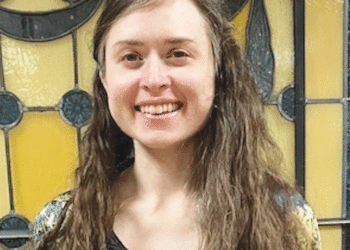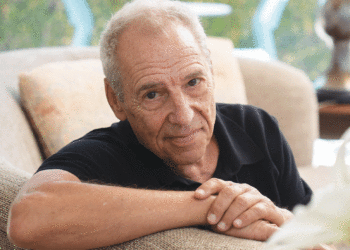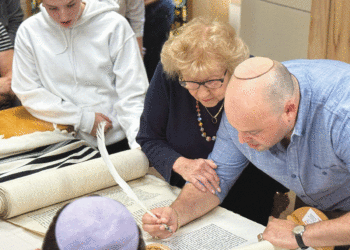By LAURA WEBER
Published in 1949, Jews in Transition, by Rabbi Albert I. Gordon, was the first book-length look at Minneapolis Jewry. When it came to Jews and civil rights, wrote Gordon, then spiritual leader of the city’s oldest Conservative synagogue and a newly minted Ph.D., “Jews, by and large, believe that all forms of prejudice and intolerance must be fought. Hence they actively support these and all other organizations that will, in their opinion, make for better human relations.”
Half a century later, Gordon’s observation was reiterated in Hyman Berman and Linda Schloff’s 2002 contribution to “The People of Minnesota” series, Jews in Minnesota, with the addendum: “One legacy of the earlier troubles was continuing commitment to civil rights and the fostering of a society of opportunity for all free from discrimination.”
The “earlier troubles” Berman and Schloff alluded to was the searing antisemitism experienced by the small and geographically isolated community in the interwar years. (Minnesota’s Jewish population was 6,000 in 1910; by 1930, some 13,000 Jews called Minnesota home.) The situation was so acute that by 1946 a nationally published investigation by journalist Carey McWilliams of antisemitism in the Twin Cities could coin a phrase that has to this day stuck to describe Minneapolis: “the capital of antisemitism in the United States.”
The 1930s was a decade of intense discrimination in employment, housing and public accommodations for Minnesota’s Jews, particularly in Minneapolis, where Jews were almost totally excluded from civic and social organizations. Antisemitism was also used as a political weapon in the gubernatorial race of 1938.
Following the war, on the heels of the American and Allied efforts to fight fascism and the revelations of the Holocaust, the negative publicity generated by McWilliams’ article (plus another journalistic investigation by Selden Menefee) galvanized civic leaders — led by newly elected Minneapolis mayor Hubert H. Humphrey — into action to enact local fair employment and housing ordinances.
Jewish and Black Minnesotans joined together to lobby for state-level legislation that would prohibit employment discrimination in the 1950s and early 1960s, thus laying the groundwork for continued efforts of individual Jews and Jewish institutions in the Civil Rights Movement of the 1960s and beyond. Given their location in the upper Midwest, a small but significant number of individual Jews also later became involved in the fight for Native American rights.
One of Mayor Humphrey’s initiatives, a self-study on human relations in the city, led to joint efforts by the Urban League, the NAACP, the League of Women Voters and the Minneapolis Jewish Council (today the Jewish Community Relations Council of Minnesota and the Dakotas) to work for local and statewide antidiscrimination legislation. Key African American leaders in these efforts were amateur boxing coach and businessman Harry Davis; newspaper publisher Cecil Newman; Minneapolis NAACP president Matthew Little; social activist and labor organizer Nellie Stone Johnson; and activist and community organizer Josie R. Johnson. All had Jewish connections.
Stone Johnson, for example, was mentored by Rubin Latz, the business agent for the laundry workers and dry cleaners union. In 1944, both ran for two vacant seats on the Minneapolis library board. (Latz was defeated in the primary; Johnson won a seat, becoming the first Black woman elected to public office in Minneapolis.) Johnson credited Latz for “building a bridge between blacks and Jews in labor.”
Rubin Latz’s son, Robert, continued in the family tradition of “struggle for equal opportunity” when he successfully ran for the state legislature in 1959. Latz put together a successful coalition of Black, Jewish and Irish Catholic voters in his North Minneapolis district that, he claimed, “helped unify the diverse political elements in North Minneapolis and remained active in civil rights after he stepped down from the legislature in 1966.
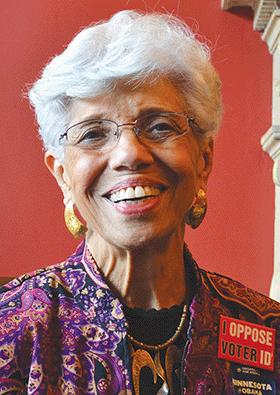
Josie R. Johnson was the chief lobbyist in the early 1960s for fair housing legislation in Minnesota, where she worked with other Jewish activists and lobbyists. Johnson traveled to Jackson, Mississippi, during “Freedom Summer” in 1964 with a racially integrated delegation of women, including Maxine Nathanson, a local leader with the National Council of Jewish Women (NCJW), to observe voter registration efforts.
The same year, the St. Paul section of NCJW created the McKinley Pre-School Project, using NCJW volunteers as teachers’ aides in that predominantly Black inner-city elementary school. Johnson later said, “The Jewish community and the African American community have always been very close allies — forever…. I’ve had this interconnectedness with the Jewish community all of my adult life.” The NCJW project served as a model for Head Start, created by the federal government in 1965 as a catch-up summer school program for low-income elementary school children.
Other Twin Cities Jews, religious and secular, headed to the South to participate in civil rights activism. Rabbi Moses Sachs of B’nai Abraham Congregation joined a small group of rabbis in support of Martin Luther King Jr. in Birmingham and Selma, Alabama. Rabbi Jerome Lipnick of Adath Jeshurun Congregation marched for civil rights in Mississippi, as did secular Jews such as Zev Aelony, the founder of Students for Integration at the University of Minnesota, which recruited white people from the Midwest to go on Freedom Rides.
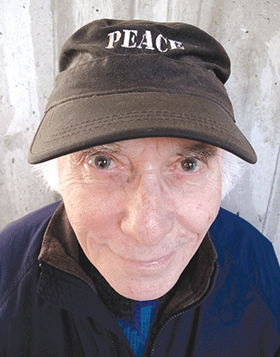
In June 1961, Aelony and Marv Davidov, who went on to be the face of the local peace movement during the Vietnam War era, were among a group of six students (three of them Jews) who were arrested in Jackson and imprisoned for 40 days in the infamous Parchman prison. Upon his death in 2009, a friend characterized Aelony as being from “that old, proud tradition of Jewish activism.”
While housing and employment discrimination had once been a serious problem for Jews, by the late 1960s the experiences of Jews and Blacks had substantially diverged. Minnesota Jews were moving solidly into the middle class.
In addition to increasing social acceptance, this meant that Jews increasingly moved out of the urban neighborhoods they had shared with Black people to the suburbs. Redlining and housing covenants were among the means used to ensure Black people stayed put. Two volatile summers of racial unrest in 1967 and 1968 on Plymouth Avenue in North Minneapolis, still a locus of small Jewish businesses, laid bare issues of housing discrimination and joblessness, particularly among youth, in the Black community.
Burned-out Jewish businesses spurred the remaining Jewish institutions in the neighborhood to close or move, creating a serious rift between Jewish and Black communities. In response, a coalition of civic, business and religious leaders from Jewish, Black and mainstream white circles formed the Minneapolis Urban Coalition. Among the Jewish leaders were Rabbi Kassel Abelson of Beth El Synagogue, Rabbi Max Shapiro of Temple Israel and Robert Latz.
Native American rights was one of the offshoots of the Civil Rights Movement of the 1960s. The American Indian Movement (AIM), a major player in Native rights, was founded in Minneapolis in 1968. Individual Jews were also among the supporters of Native American rights, including Louis Lerman, a St. Paul attorney who was adopted into an Ojibwe tribe in 1962 for his advocacy work on their behalf. More recently, Mordecai Specktor, editor and publisher of the American Jewish World, has for 40 years been involved with Native issues, including applying his journalist skills to writing for The Circle, a monthly, Minneapolis-based newspaper that covers news from a Native American perspective.
Attorney Ken Tilsen (born in New Leipzig, North Dakota) was known for defending Vietnam War resisters, but came to prominence with his “defense … AIM activists following the 71-day U.S. government siege of Wounded Knee, on the Pine Ridge Reservation, in 1973,” along with Larry Leventhal, who devoted his career to American Indian activism and was a national expert on treaty rights.
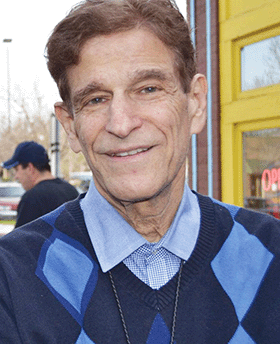
Clyde Bellecourt, the recently deceased AIM co-founder, noted it was no coincidence that most of the seven Wounded Knee attorneys were Jewish (in addition to Tilsen and Leventhal, Mark Lane and William Kunstler): “They saw in us the people, like themselves, that had been targeted for extinction, took very deep losses in blood, land and culture, but managed to survive and even thrive.”
Antisemitism has not significantly affected the now-prosperous Minnesota Jewish community in a material way (education, employment or housing) for decades, but systemic racism has not abated for Black people and other people of color. In recent years, progressive Minnesota Jewish groups such as Jewish Community Action and NCJW Minnesota, along with the stalwart Jewish Community Relations Council, are consciously attempting to renew past bonds with BIPOC (Black, Indigenous and People of Color) groups, such as Northside Achievement Zone, to continue to work on social justice issues.
***
Laura Weber, an independent historian living in Minneapolis, recently stepped down as editor of Minnesota History, the quarterly of the Minnesota Historical Society.
This article originally appeared in Western States Jewish History, Vol. 51, No. 2 (Spring 2021), and is reprinted with permission.
The original version of this article included numerous footnotes. Sources cited, in addition to those mentioned, included Jews in Minnesota Politics, by Robert Latz; articles from Minnesota History and the online MNopedia; Nellie Stone Johnson: The Life of an Activist, as told to David Brauer; and articles in the American Jewish World.
(American Jewish World, April 2022)











